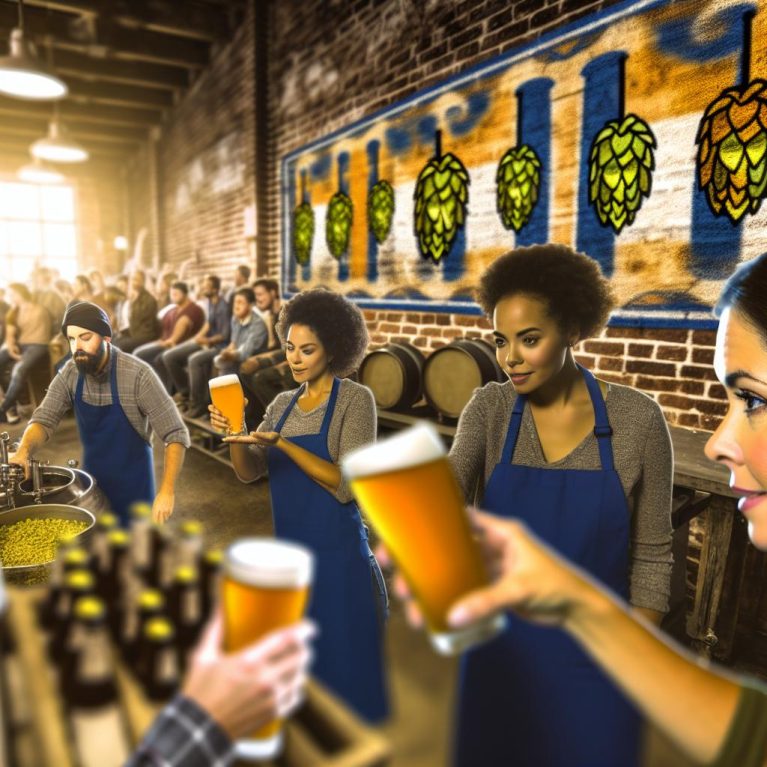The Emergence of India Pale Ale in Craft Beer Culture
The craft beer industry has undergone a fascinating transformation over the last few decades, with the rise of *India Pale Ale (IPA)* taking center stage in this evolving landscape. Its popularity can be attributed to a blend of historical significance, distinctive flavors, and a shift in consumer preferences.
Historical Context of IPA
The origins of India Pale Ale can be traced back to the late 18th century. During this period, British brewers developed this beer style to withstand the long sea voyages to India. To ensure the beer remained fresh throughout the journey, IPAs were brewed with a higher alcohol content and an increased level of hops, which acted as natural preservatives. These characteristics not only ensured the beer’s longevity but also imparted a distinctive bitterness and aroma that would come to define the style.
These historical roots highlight the ingenuity of early brewers who ingeniously adapted to the challenges of their time, inadvertently creating a beer that would continue to captivate palates centuries later. Today, the original purpose of IPAs might have faded, but their enduring appeal remains intact as drinkers continue to appreciate the balanced complexity of flavors that these beers offer.
IPA’s Evolution in Modern Times
As the craft brewing movement gained momentum in the late 20th century, IPAs rose to prominence once again. Particularly in the United States, craft brewers began experimenting with a variety of hop species, resulting in a diverse array of IPA sub-styles. This experimentation has led to the establishment of several renowned varieties.
One of the most recognizable is the *West Coast IPA*, known for its bold and assertive hop flavors. It often combines piney and citrusy notes, making it an embodiment of the vibrant hop character that many beer enthusiasts seek. On the other hand, the *New England IPA* has gained popularity for its hazy appearance and fruity flavor profile, which offers a softer bitterness and a juicy mouthfeel. These versions of the IPA highlight the adaptability of the style and how it has evolved with regional variations in the brewing world.
Characteristics of India Pale Ale
IPAs are primarily distinguished by their *hoppy bitterness* and aromatic qualities, setting them apart from other beer styles. The hop-forward profile may vary significantly depending on the type and quantity of hops employed by the brewer. However, modern IPAs often feature a balanced interplay between malt sweetness and hop bitterness, making them a versatile choice for many beer aficionados.
This balance is crucial, as it allows for a wide range of flavors and nuances that can cater to different tastes. Consequently, IPAs have become a canvas for brewers to explore creative combinations of flavors, ranging from tropical and fruity to resinous and piney. This exploration has significantly contributed to the appeal of IPAs in the craft beer market.
Consumer Preferences and Market Trends
The surge in the popularity of IPAs is also a reflection of changing consumer preferences. Beer enthusiasts are increasingly drawn to the unique and varied flavors that IPAs offer. The emphasis on hop-forward beers aligns with a broader trend toward more robust sensory experiences, reflecting a shift in tastes across the beverage industry.
In response, breweries have capitalized on the growing demand by continually experimenting with new hop varieties, adjuncts, and brewing techniques. This constant innovation has further cemented the status of IPAs as a staple in the craft beer community. Brewers constantly push the boundaries of flavor, seeking unique ingredients and techniques that can provide drinkers with novel experiences.
Additionally, the evolving preferences of consumers continue to challenge brewers to innovate and expand the scope of what IPAs can encompass. This dynamic interplay between consumer demand and brewing creativity has resulted in a vibrant and ever-changing landscape within the craft beer industry, where IPAs thrive.
In conclusion, the rise of India Pale Ale in the world of craft beer culture is a testament to both its rich historical roots and its adaptability to contemporary palates. The ongoing evolution of this beer style showcases the dynamic nature of the industry and the continuing quest for new and innovative beverage experiences. As the craft beer landscape remains in constant flux, the IPA endures as a symbol of enduring creativity and the boundless potential of brewing craftsmanship.

